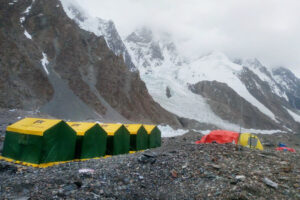Stats behind the feat – updated with pictures
(Pythom/Adventurestats/story updated with images Feb 28) For years expeditions tried and tried until yesterday one team made it. Now only K2 remains. Or does it. In yesterday’s Nanga Parbat D-Day Special we mentioned some facts and statistics to put the ascent in perspective. Today some more interesting numbers on what’s been done and what’s ahead.
It’s all about the term “calendar winter”
There has been some controversy around the classification but today most teams don’t start climbing until after December 21. For an expedition to classify as full winter expedition, also known as ‘calendar winter expedition’ the climb (from basecamp) must start on or after that date and the summit must be reached before March 20.
The custom is based on astronomical seasons and the Earth’s tilt related to the sun. Dec 21 is the darkest day of the year on the Northern hemisphere and traditionally marks the start of winter.
The practice makes sense in terms of weather. Analyzing 4 full seasons of weather patterns on Mount Everest summit before accepting the rule on Adventurestats, Adventureweather found the cold and wind were in fact hardest during this period.
But what about an expedition that starts before December 21 but summits during the calendar winter? Such an ascent is classified ‘partial winter expedition with a winter summit’.
Now, let’s take a look at the statistics.
Only one peak remains to be summited in winter: K2. That’s the big prize. Nobody has summited the mountain in winter, period.
But beyond K2 four peaks actually remain to be climbed and summited within calendar winter season: Kanchenjunga, Lhotse, Dhaulagiri and Manaslu. They all had winter summits but in partial winter expeditions.
Climbers with most winter summits
There have been 34 full winter expedition summits, accomplished by 27 people (some topped out more than once).
Add to that another 13 winter summits in partial winter expeditions.
In terms of calendar winter summits Simone Moro leads by far: The Italian climber has four such ascents followed, at two each, by Polish Jerzy Kukuzka, Polish Maciej Berbeka and Russian Denis Urubko.
Even including the partial winter expeditions Moro is on top with four winter summits, although sharing this position with the late Polish Jerzy Kukuzka, also at four.
Two other big names in Himalaya mountaineering follow close behind in this category: Polish Krzysztof Wieliki and the late Polish Maciej Berbeka at three winter summits each.
The first Pakistani and other facts
Ali Sadpara is the first Pakistani to summit an 8000er in winter. The only other “high-altitude porter” (not really a correct description in this case) to make a winter 8000er summit is the legendary Ang Rita Sherpa who summited Everest on Dec 22 1987.
As for Alex Txikon, there have actually been many Spanish winter summits (8) but all of them to the same mountain – Cho Oyu during the 1993 and 1994 season. With last night’s success, Txikon and his mates closed another chapter in Himalaya history, and Winter Nanga Parbat will forever bear their names.





